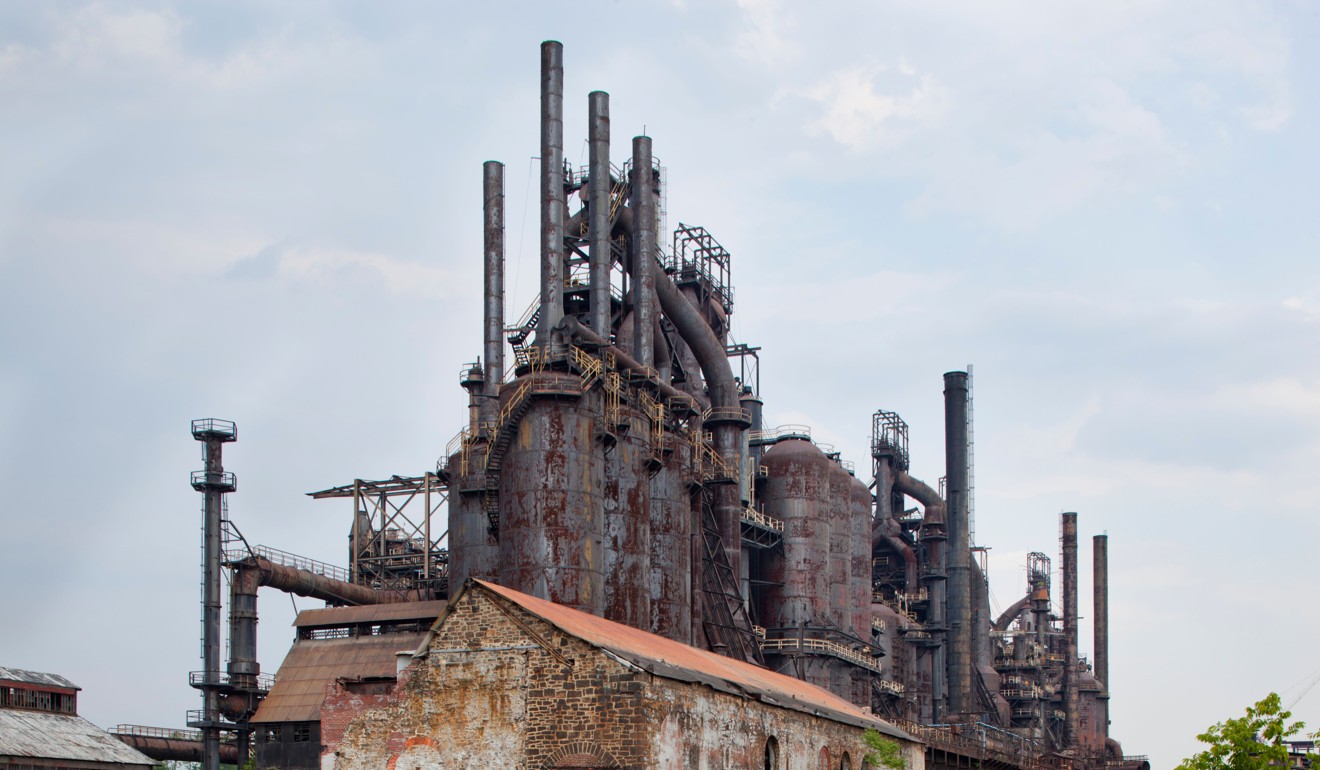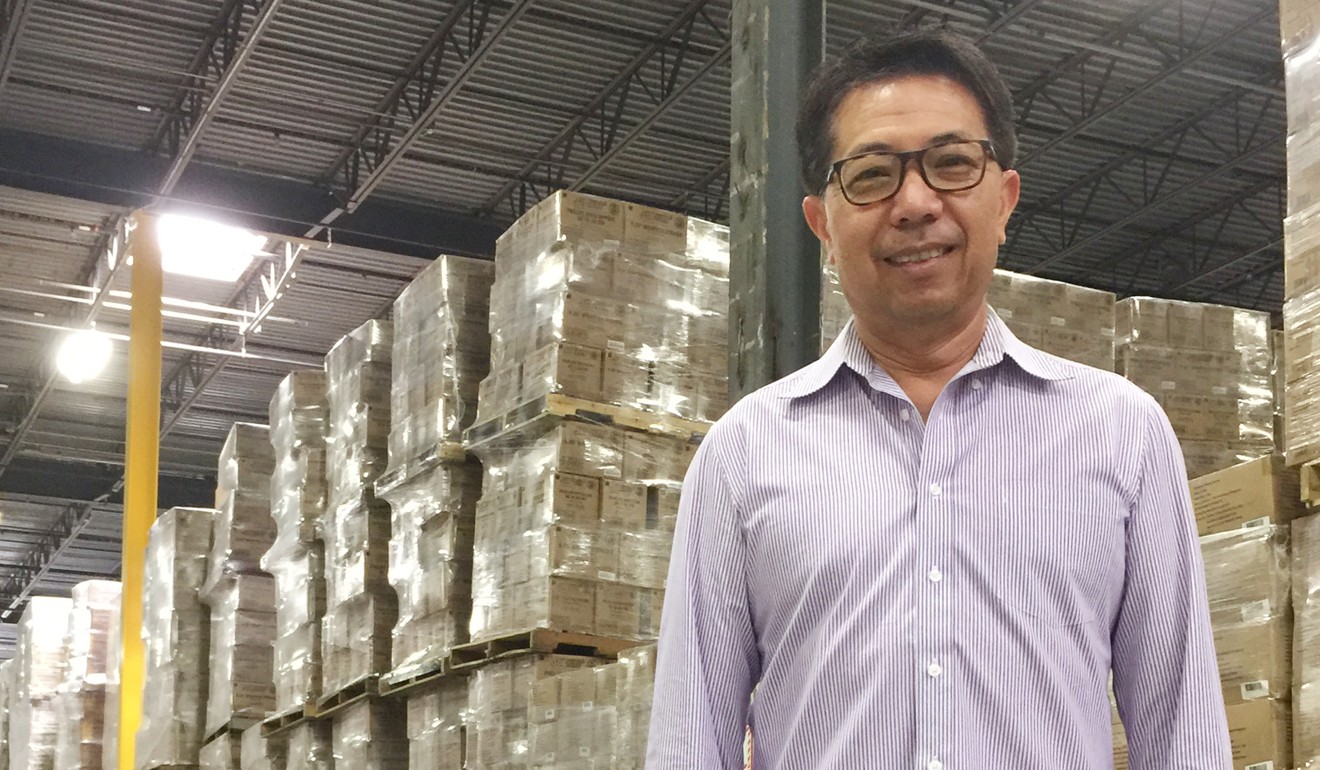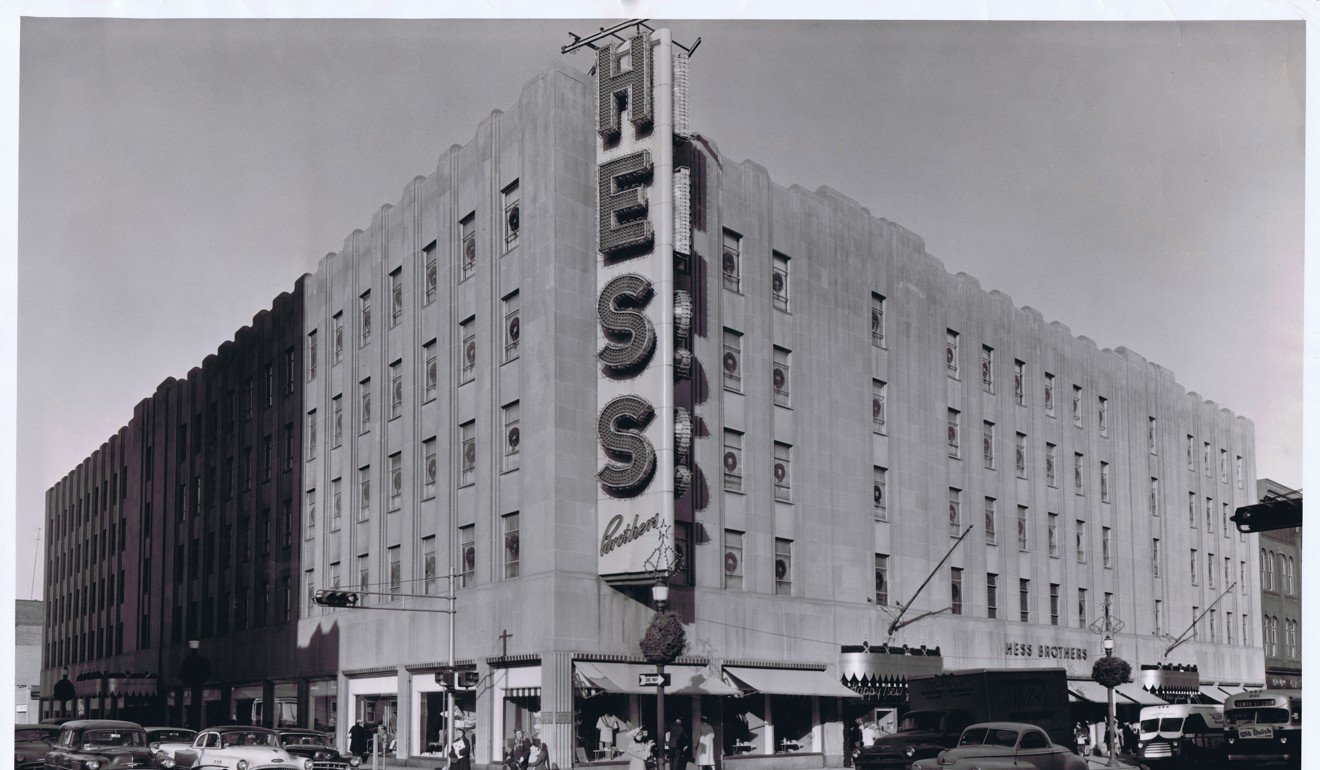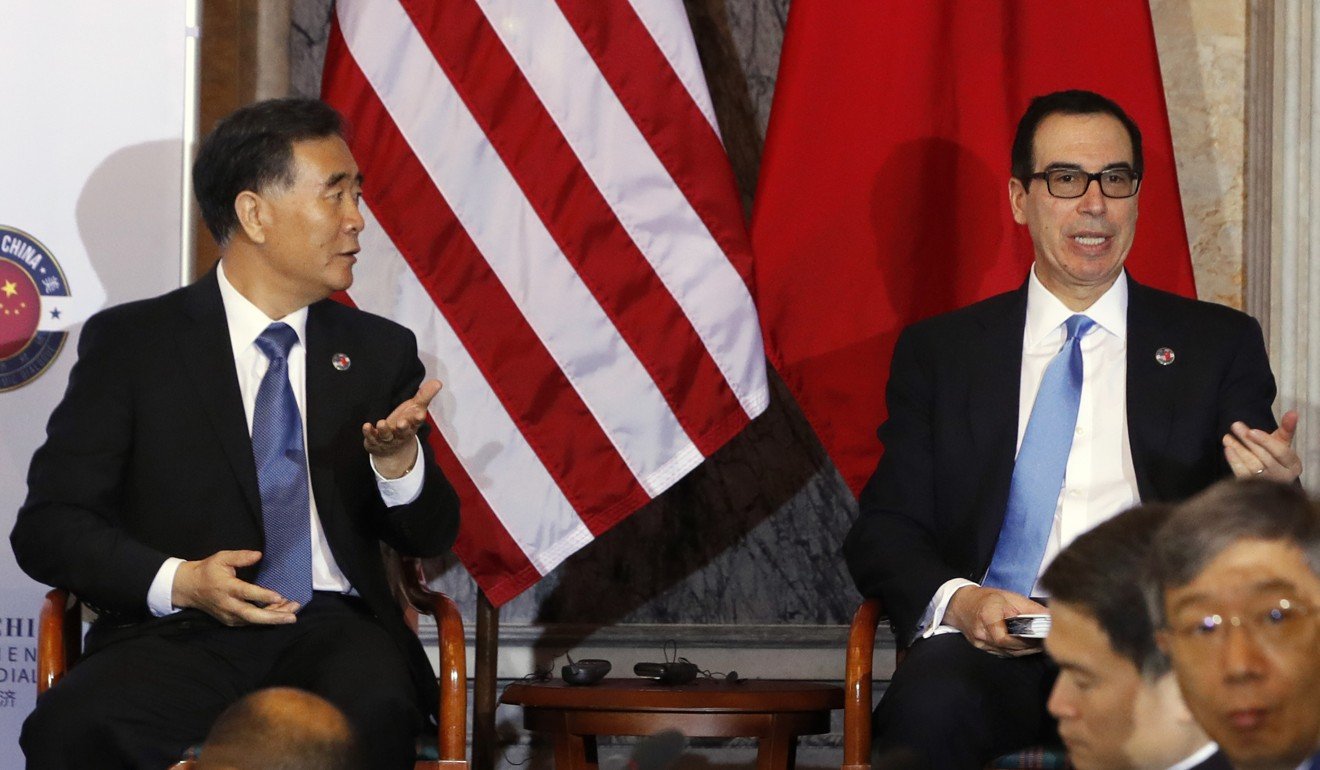
How an American city is cashing in on China’s ‘made in USA’ desire
Chinese manufacturers help Allentown, Pennsylvania, bounce back from rust belt status
China’s Fuling Global hit a dead end when it tried to expand sales of its disposable plastic tableware to a well-known US fast-food chain. The client, one of Fuling’s biggest, would only buy straws made in America.
Two years later, in mid-2016, Fuling was churning out a million straws a day at a US$5 million facility in Allentown, Pennsylvania, and it plans to expand its new US unit to produce cups and containers.
Fuling wasn’t the first Chinese company to start operations in the Allentown area, an economic anchor of the Lehigh Valley, famous for building the world’s most advanced iron and steel industry before its rapid decline a century later.
Beijing Oriental Yuhong, a maker of advanced weatherproofing materials, also set up a factory last year and at least one other mainland Chinese company is mulling a production base in Allentown to supply customers in the United States, according to the local economic development authority.
More may follow in the wake of a visit by the mayor of Taizhou, Zhejiang province, last month.
Chinese interest in Allentown is showing better results than Chinese diplomacy in Washington, where the first Sino-US Comprehensive Dialogue ended abruptly last week, with little to show. High-level US and Chinese officials including Vice-Premier Wang Yang and US Treasury Secretary Steven Mnuchin had gathered in Washington to find ways to rebalance their trade relationship.
As a reminder of what the US wants out of the dialogue, US President Donald Trump’s administration declared the first ever “Made in America Week”, underscoring his focus on keeping manufacturing jobs in the US.
While the meetings in Washington resulted in little more than commitments to keep trying, what’s happened in Allentown suggests that market forces and political pressure have already started pulling Chinese companies to align with Trump’s call for the bilateral relationship to produce more US jobs.

“Having a made-in-the-USA brand is very powerful for many Chinese companies right now,” Fuling’s chief financial officer, Gilbert Lee, said at its Allentown factory. He added that he was saving room for additional machinery that would churn out cups and containers for a customer base that includes Subway, Wendy’s and Burger King.
Allentown came close to scoring its biggest catch from the greater China region.
Taiwan’s Foxconn, which assembles iPhones and other high-end consumer electronics, put Allentown on a short list of locations for its first US plant. After months of talks with authorities in several locations, the company announced this week plans to build a $10 billion plant in Wisconsin.
Although Wisconsin is getting Foxconn’s main plant, Allentown is still in the running for other Foxconn investment, according to Colin McEvoy, communications director for the Lehigh Valley Economic Development Corporation.
“Lehigh Valley has submitted several sites to the state [of Pennsylvania] for Foxconn’s consideration,” McEvoy said. “Foxconn’s announcement about the official selection of Wisconsin is consistent with what we believe the company’s plans to be, which is locating several different facilities in multiple sites.
“So that announcement doesn’t change things very much for Pennsylvania or the Lehigh Valley in terms of still being in contention for additional investment,” he said.
Given Trump’s accusations that China put too many Americans out of jobs, the interest Chinese companies are showing couldn’t be happening in a more appropriate place. Globalisation put Bethlehem Steel – for decades the biggest employer in the Lehigh Valley – out of business in the late 1990s. Although the decision by the company’s directors, in 1870, to build a world-class foundry in the area helped transform the US into a major industrial power, Bethlehem Steel couldn’t adapt quickly enough to the technological changes that allowed the Japanese and Germans to produce steel more cheaply, local historian Frank Whelan said.
By the 1980s, “they were a dinosaur”, he said. “They didn’t invest enough of their profits into modernisation.”
And so the decline of the region made headlines nationally, creating a political issue that would fester well into the 21st century after spawning one of the biggest US pop songs of the 1980s.
Mention Allentown, about 150km west of New York, to any Gen-X or Baby Boomer American and they’re likely to start singing – in their head at least – Billy Joel’s 1982 song of the same name.
“Well, we’re living here in Allentown,” the song starts. “And they’re closing all the factories down.”
Documenting the loss of manufacturing jobs in one of America’s most important industrial hubs, the song’s first two lines make clear why it became an anthem for a manufacturing sector in the throes of decline.
The fall was jarring, considering the commanding heights the area had reached.
Allentown and Bethlehem pioneered processes for making iron and steel on an industrial scale, and “they were on top for so long, they didn’t know what it was like to not be on top”, said Whelan, the author of Lehigh County: A Bicentennial Look Back at an American Community.
Bethlehem Steel, for example, held a patent for the H-beam that ushered in the era of the 20th century skyscraper. It also sold weapons to both sides of the Russo-Japanese War and emerged as the largest supplier of armaments to the Allied forces in the first world war.
“It was devastating,” Jill Youngken, chief curator of the Lehigh Valley Historical Society in Allentown, said of Bethlehem Steel’s eventual demise. “When you have one employer that’s such a huge part of the economy, it affects everything. It left a huge, huge hole in this area and it took many years to come back.”
Globalisation was partly to blame for the loss of American manufacturing jobs over the next quarter of a century, an issue that eventually became a political tinder box as many more industrial cities in the US became part of the country’s “rust belt”.
By the time 2016 presidential election candidates Trump and Hillary Clinton were campaigning, the loss of manufacturing jobs had become the most pressing political issue. Trump used China to bludgeon Clinton, accusing her and a generation of US leaders of agreeing to global trade rules that put companies like Bethlehem Steel out of business.
Trump said Clinton abetted China with her seal of approval on trade deals like the Trans-Pacific Partnership, which Trump killed off during his first week in office.
As one of the most bruising US presidential campaigns of modern history played out, Fuling, based in Taizhou, was revving up its first US factory to full capacity.
Fuling and other Chinese companies – some already invested in the Allentown area and others contemplating such a move – are drawn by two factors that have nothing to do with Sino-US negotiations.

Pennsylvania is one of the main centres of new US natural gas production. Fracking technology has allowed energy producers to tap the Marcellus Shale formation of sedimentary rock that contains a quadrillion cubic metres of the fuel. That’s more than half the entire natural gas reserves of Canada, a major producer of the commodity, according to US Central Intelligence Agency data.
Proximity to natural gas supplies helped bring down power costs for manufacturers, said David N. Taylor, president of the Pennsylvania Manufacturers Association, adding that further cost savings were likely as gas distribution projects developed, including the proposed 193km PennEast pipeline.
“Electricity prices correlate directly with natural gas prices, so in large measure, the decline can be attributed to decreasing natural gas prices driven by increased supply from Marcellus and other nearby gas sources,” said McEvoy of the Lehigh Valley Economic Development Corporation.
The current wholesale electricity price in the Lehigh Valley runs between US$30 and US$40 per megawatt-hour, compared with US$60 to US$70 per megawatt-hour a decade ago.
“The energy rate here is relatively low, and we were able to find an even lower rate by switching to another provider,” said Fuling’s Lee. “Once we get into [more energy intensive] injection moulding and thermal forming for cups and containers, power rates will be an even more important factor.”
The other factor attracting companies, Chinese or otherwise, is that the Lehigh Valley is geographically close to New York and Philadelphia. Indeed, some authorities see all three areas as one integrated megalopolis.
“We’re a one-day drive from more than 100 million consumers in the US – about one third of the market – and half of Canada’s consumers,” said Matthew Tuerk, vice-president of economic development and marketing at the Lehigh Valley Economic Development Corporation. “In the Amazon world and the Alibaba world, six weeks isn’t good enough.”

And logistics is set to speed up once FedEx completes its largest US warehouse and logistics hub in the Lehigh Valley. The US$335 million facility is due to open next year, and will eventually be able to process 75,000 packages an hour, according to a report in The Morning Call, a local newspaper.
Tuerk, who visited more than six mainland Chinese cities, including Shanghai, on a roadshow last year, said his agency’s strategy was to woo Chinese producers looking to lower costs by producing in the US for American customers.
He works in a region that knows how to survive.
In an irony of industrial history, the bankruptcy of Bethlehem Steel helped sustain the region through what was to come a decade later.
When the steelmaker’s fate became apparent, economic development and workforce resource agencies in Bethlehem, Allentown, as well as those on the Lehigh Valley regional level pulled together to promote and support industries including information technology, life sciences, financial services, real estate and education.
Nothing was too far-fetched. Part of Bethlehem Steel’s facility was sold to Las Vegas Sands, which opened a casino resort there just months before the financial crisis peaked. That plan had to overcome opposition from many locals who argued that a casino maligned the memory of Bethlehem’s founders, a sect of devout Christians from Germany, called the Moravians.
Digital camera maker Olympus moved its headquarters for North and South America to the area from Long Island, New York in 2004, marking the start of an economic revival.
Referring to Olympus as “a big, white whale”, Tuerk said the company’s move “was a massive deal for our region. It was the first major win in terms of economic development”.
Other businesses have grown from Ben Franklin Technology Partners, an incubator started by area agencies including Lehigh Valley Economic Development and private investors. These include OraSure Technologies, which produces an HIV self-testing product that the Bill & Melinda Gates Foundation is subsidising to help NGOs working in developing nations get the product at a reduced price.

About 10 years after the bankruptcy of “the Steel” as people in the Lehigh Valley refer to the industrial behemoth formerly in their midst, the global financial crisis hit.
But the area’s newly diversified economy fared better than most in the US. Nearly a decade on from the crisis, the Lehigh Valley’s employment rate is 4.8 per cent higher than it was before 2008, while the average for the entire state of Pennsylvania is just over 1 per cent higher.
Still, the area has a long way to go to reassume the economic prominence it had throughout most of the 20th century. It wasn’t just about steel. By attracting silk production technology, Allentown became one of the world’s leading producers of textiles and furniture.
“Many people said the dresses of all the queens of Europe were made in Allentown,” Whelan said.
Allentown’s prowess in making textiles and other consumer goods spawned Hess’s, once one of the best-known department store chains on the US east coast. Opened in 1897, Hess’s eventually had 17 locations and, by the 1950s and ’60s, attracted television stars, including Zsa Zsa Gabor and Johnny Carson, to fashion events at the flagship store on Allentown’s main thoroughfare, Hamilton Street.
Hess’s art deco flagship store is now gone. It’s been replaced with the corporate headquarters for Talen Energy, a nondescript modern building with a prominent glass curtain wall.
The rest of Allentown’s downtown heart is undergoing thorough renovation, with new art galleries, florists and bars opening regularly. However, just a few streets from the centre, other storefronts along Hamilton Street are pawn shops or display “for sale” signs. Many of the century-old, brick row homes and semi-detatched houses along the streets parallel to Hamilton are badly in need of renovation.
Allentown was “not quite there yet”, in terms of its economic rebound, Youngken said.
“Most of the people have moved out to the suburbs,” said the manager of a spartan Chinese take-out restaurant called Beijing Wok, on an edgier section of Hamilton Street. “There are more Chinese people in the area, but not downtown.”

If the likes of Fuling and Oriental Yuhong continue to expand, and if Foxconn decides to build its US facility in Allentown, they would help to bring the region full circle in terms of economic heft.
While Fuling’s Lee hires local labour, he needs some skilled technicians from his company’s plants in China because they know best how to troubleshoot and ensure the machinery runs efficiently.
Immigrants have always been part of the Lehigh Valley story.
“We fit into that heartland mode in terms of our pragmatic attitude about work and getting things done, but we don’t have that weird, Midwestern xenophobia” because the local steel industry actively recruited from places as diverse as Hungary and Mexico throughout the 20th century, Tuerk explained.
And if new immigrants from mainland China and Taiwan don’t find enough excitement in the rivers and rolling hills of eastern Pennsylvania, they can always spend an evening at the Sands casino.

